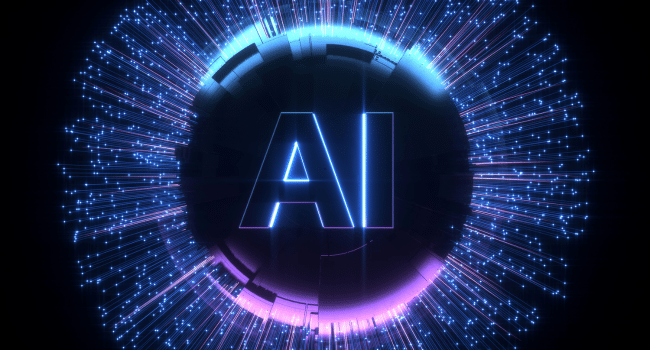Table of Contents
This blog will explore how AI tools can help educators personalize and improve learning for students, thus helping them realize their full potential and transform digital education.
AI can offer solutions to educators’ many problems, from large class sizes and differing learning styles to the need for individual student care. AI offers one possible answer.
Personalized Learning
AI platforms can analyze student data to analyze their strengths and weaknesses, then generate personalized learning paths with tailored resources for each learner. DreamBox Learning is one such AI-powered math education tool offering adaptive K-8 lessons through engaging interactive experiences. Their AI automatically adjusts content difficulty according to each learner’s progress so that they are appropriately challenged.
Apps designed to assist students learning English can be tailored specifically to each learner’s vocabulary and pronunciation struggles, providing tailored exercises and feedback. Platforms like ELSA use AI technology to analyze pronunciation and provide tailored, individualized feedback – offering exercises and challenges focused on specific words or sounds which help develop accents and increase fluency for the learner.
Increase Engagement
AI-powered simulations and games can make learning interactive and enjoyable, offering math challenges or historical events explored via virtual reality.
Prodigy Math Game is an outstanding example. This interactive and enjoyable math learning game uses AI technology to tailor its difficulty level based on student progress.
Mission US is an interactive series of games designed to increase student engagement. Students take on the roles of historical figures during key events like the American Revolution and Civil Rights Movement; AI-powered characters help personalize this experience for players, providing tangible learning experience within history lessons.
AI tutors can offer real-time feedback for writing assignments, pronunciation exercises and problem-solving activities to allow students to correct mistakes quickly and adapt in real-time – creating an individualized feedback loop that fosters deeper comprehension as well as greater sense of accomplishment for every student involved.
AI tutors have revolutionized the learning process by offering instant, personalized feedback on a range of topics and skills. Students can submit writing assignments to AI-powered tools like Grammarly for analysis; not only will it identify typos and grammatical mistakes, but it will also offer stylistic suggestions and vocabulary expansion assistance – helping improve writing abilities while strengthening communication. With real-time feedback loops such as Grammarly providing immediate assistance students can strengthen both writing abilities as well as communication abilities!
Century Tech AI tutors were specifically created for educational settings. By analyzing student performance data to create personalized learning paths, AI tutors such as Century Tech provide targeted assistance and challenges that match students’ strengths and weaknesses – creating greater comprehension as well as giving a sense of accomplishment to those able to see their progress.
AI tutors can provide a high degree of customization that’s difficult to attain through traditional classroom settings. By tailoring their lessons to fit the pace and style of each individual learner, these AI tutors give each one of their students an individualised education experience – giving them control of their own learning while encouraging a lifelong passion for knowledge.
Automating Administrative Tasks
AI can save teachers valuable time by automating repetitive administrative tasks. No longer do teachers need to spend hours administering multiple-choice tests; now AI tools on platforms such as Google Classroom enable teachers to immediately assess students’ responses and gain immediate insight into where more support may be necessary for certain students.
Clever is an artificial intelligence (AI)-powered platform designed to simplify administrative processes like managing student lists, handling login credentials and integrating various educational apps – saving teachers hours of data entry and troubleshooting work.
AI can assist teachers in tailoring lessons specifically to each student, identifying learning gaps and offering mentorship services. Teachers can create an inclusive classroom atmosphere which fosters stronger relationships between themselves and their pupils.
How to Develop and Implement an AI Integration Strategy
AI essay writing is a powerful tool, but must be utilized with caution and care. Take these points into consideration when developing and integrating AI into K-12 classrooms. Here are a few steps that will help get you there:
- Start By Recognizing Challenges: Begin by recognizing the main learning obstacles faced by your students. Teachers should clearly outline how an AI tool aligns with curriculum goals and outcomes.
- Prioritize Ease of Use and Accessibility: AI tools should be designed with user friendliness in mind for both teachers and students, including those with disabilities. Also ensure they are accessible.
- Begin Small and Expand Gradually: Introduce only a select few AI tools at first and gradually introduce more as students and teachers become comfortable using them.
- Recollect Feedback and Iterate: Regularly solicit feedback from your students regarding their experiences using AI tools, to use this feedback as a basis for improving implementation and making any necessary modifications or alterations.
Adopt a Blended AI Approach
AI shouldn’t replace traditional teaching methods but should instead serve to supplement them. By strategically incorporating AI into specific aspects of your curriculum, AI can enhance learning while still keeping its emphasis on critical thinking and human interactions.
Prioritize Responsible AI Use
Choose AI tools that are culturally sensitive and neutral, like Memrise. This spaced repetition tool uses spaced repetition to help students memorize grammar and vocabulary. Care should be taken when evaluating AI tools to detect any biases within their algorithms or training data that relate to race, gender or socioeconomic backgrounds; additionally it is imperative to ensure image generators do not reinforce harmful stereotypes by restricting representation of diverse groups.
Encourage responsible online behavior by selecting AI tools with robust privacy protection and clear data usage policies, protecting student data while building trust with students. Also look for AI tools that foster critical thinking and source evaluation instead of quick answers – this will equip your children with skills necessary for ethical digital living.
